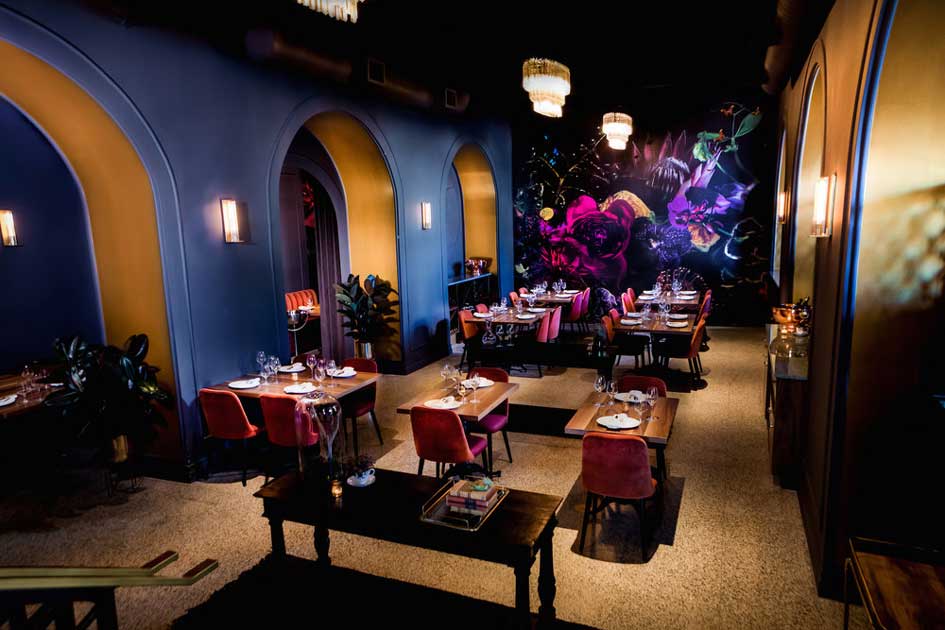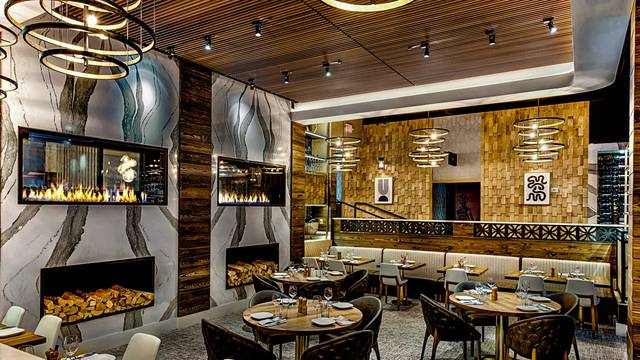Pan Asian Dining Islamabad: Appreciate Genuine Asian Recipes
Pan Asian Dining Islamabad: Appreciate Genuine Asian Recipes
Blog Article
Savor Genuine Asian Food With a Pan-Asian Spin for a Culinary Experience
Getting started on a cooking trip via genuine Eastern food, improved with a Pan-Asian twist, offers a distinct opportunity to explore the abundant tapestry of tastes that specify the region's diverse culinary traditions. As you ponder these tempting recipes, think about the cultural stories and historic impacts that form them, each bite supplying a tale waiting to be uncovered. Romantic restaurants Islamabad.

Checking Out Pan-Asian Tastes
In the realm of global gastronomy, Pan-Asian cuisine attracts attention for its exceptional variety and the unified interplay of tastes from numerous Eastern societies. This culinary technique celebrates the abundant customs and unique components discovered throughout the continent, creating a tapestry of preferences that is both rewarding and appealing. Key to Pan-Asian food is its capacity to balance different tastes-- sweet, salty, spicy, and sour-- while highlighting the quality and high quality of each active ingredient.
From the umami-rich soy sauce of Japan to the fiery chili peppers of Thailand, Pan-Asian cuisine uses a comprehensive combination of tastes. These elements are typically incorporated in inventive methods, boosting recipes with layers of intricacy. For example, the usage of great smelling natural herbs such as lemongrass and cilantro, usual in Vietnamese and Thai cuisine, adds a revitalizing illumination to dishes, while the unification of coconut milk delivers a luscious, abundant structure.
The emphasis on fresh fruit and vegetables and aromatic flavors makes certain that each dish is not only a feast for the taste however likewise for the senses. Pan-Asian cuisine welcomes restaurants to begin on a cooking trip, exploring the large and varied landscapes of Oriental gastronomy with every bite.
Combination Meals to Attempt
While Pan-Asian food is commemorated for its conventional flavors, the modern-day culinary landscape is significantly accepting fusion recipes that blend these classic components with impacts from other areas. This ingenious technique not only honors the abundant heritage of Oriental cookeries but also presents novel taste experiences that interest modern tastes.
A prime example of such a fusion meal is the Korean-Mexican taco, where marinated bulgogi beef is covered in a cozy tortilla, topped with kimchi and a hot gochujang-infused salsa. This mix marries the strong, savory flavors of Korea with the vivid, fresh elements of Mexican food. In a similar way, sushi burritos have gotten appeal, integrating the fragile creativity of Japanese sushi with the passionate, hand-held convenience of a burrito, usually featuring combination ingredients like tempura shrimp and avocado with a drizzle of wasabi mayo.
One more noteworthy meal is Thai curry ramen, which instills the creamy, aromatic spices of Thai curry into the calming broth of conventional Japanese ramen, creating a harmonious blend that tantalizes the senses. These combination recipes extend beyond simple uniqueness; they stand for a culinary dialogue between societies, urging expedition and development worldwide of Pan-Asian food.
Crucial Ingredients and Spices
To really value Pan-Asian cuisine, one have to comprehend the crucial ingredients and flavors that develop its foundation. This diverse culinary style attracts from a rich tapestry of Asian traditions, employing a harmonious mix of flavors and appearances.
Aromatic components are hop over to these guys crucial, with lemongrass, garlic, and ginger being ubiquitous across numerous Pan-Asian recipes. These active ingredients supply an aromatic base that enhances the intricacy of flavors. Seasonings such as star anise, cardamom, and cinnamon present warmth and personality, echoing impacts from regions like China and India.

Food Preparation Techniques and Tips
Understanding the art of Pan-Asian cuisine requires familiarity with its distinctive food preparation techniques, each adding to the lively tapestry of flavors this culinary custom is commemorated for. Central to these approaches is the stir-fry, a quick food preparation technique that preserves the nutritional stability and dazzling colors of components. Using a frying pan, the stir-fry method permits even heat distribution, important for achieving the characteristic appearance and flavor equilibrium of Pan-Asian recipes.
An additional fundamental strategy is steaming, particularly common in Chinese food. This gentle approach maintains the all-natural flavors and nutrients of components, making it excellent for fish and shellfish and veggies. Dumplings, a cherished staple, commonly profit from steaming, leading to soft, succulent textures.
Grilling, also integral, passes on smoky midsts to dishes such as Oriental bulgogi or Japanese yakitori (asian fusion restaurant). This method frequently involves seasoning active ingredients, enabling flavors to penetrate deeply prior to cooking over an open flame or hot plate
Last but not least, understanding the art of balancing flavors-- pleasant, sour, salted, bitter, and umami-- is vital. Appropriately layering these aspects can elevate a meal from common to extraordinary, supplying a complicated and pleasing culinary experience that embodies the essence of Pan-Asian cuisine.
Eating Experiences Worldwide
Around the world, Pan-Asian cuisine provides an unparalleled dining experience, commemorated for its rich tapestry of tastes and dynamic discussions. This cooking phenomenon has discover this gone beyond cultural borders, recording the hearts and palates of food enthusiasts worldwide. In cosmopolitan cities fresh York, London, and Sydney, Pan-Asian restaurants act as fusions where culinary practices from Thailand, Japan, China, and past converge, supplying restaurants with an eclectic mix of dishes that highlight the area's variety.
The global appeal of Pan-Asian food exists in its capability to provide both authenticity and technology. Chefs skillfully wed typical ingredients such as lemongrass, soy sauce, and miso with contemporary methods, resulting in recipes that are both familiar and refreshingly new. This fusion allows diners to get started on a culinary journey that values heritage while embracing modernity.
Additionally, eating experiences are elevated with attentively designed settings that show the values of Pan-Asian looks. From minimalist Japanese-inspired interiors to lively Thai-themed rooms, each dining establishment provides a special atmosphere that enhances the culinary offerings. Because of this, patrons are not simply taking in a dish but partaking in a social experience, making Pan-Asian dining a truly worldwide phenomenon.
Conclusion
The exploration of Pan-Asian food uses an extensive understanding of the intricate interplay of flavors and culinary traditions throughout Asia. By welcoming combination recipes such as Thai curry ramen and sushi burritos, the culinary trip not only highlights the adaptability of traditional ingredients yet additionally showcases cutting-edge modern-day methods. This gastronomic adventure, improved by cooking approaches and essential seasonings, gives an one-of-a-kind opportunity to appreciate the multiculturalism and culinary artistry that define Pan-Asian cuisine on a worldwide scale.
Beginning on a cooking journey through authentic Eastern cuisine, boosted with a Pan-Asian spin, supplies an try this out unique opportunity to explore the abundant tapestry of flavors that define the area's diverse culinary traditions.In the realm of worldwide gastronomy, Pan-Asian food stands out for its remarkable variety and the harmonious interplay of tastes from different Eastern cultures. Trick to Pan-Asian cuisine is its capability to stabilize contrasting flavors-- pleasant, salty, spicy, and sour-- while highlighting the freshness and top quality of each ingredient.

Report this page